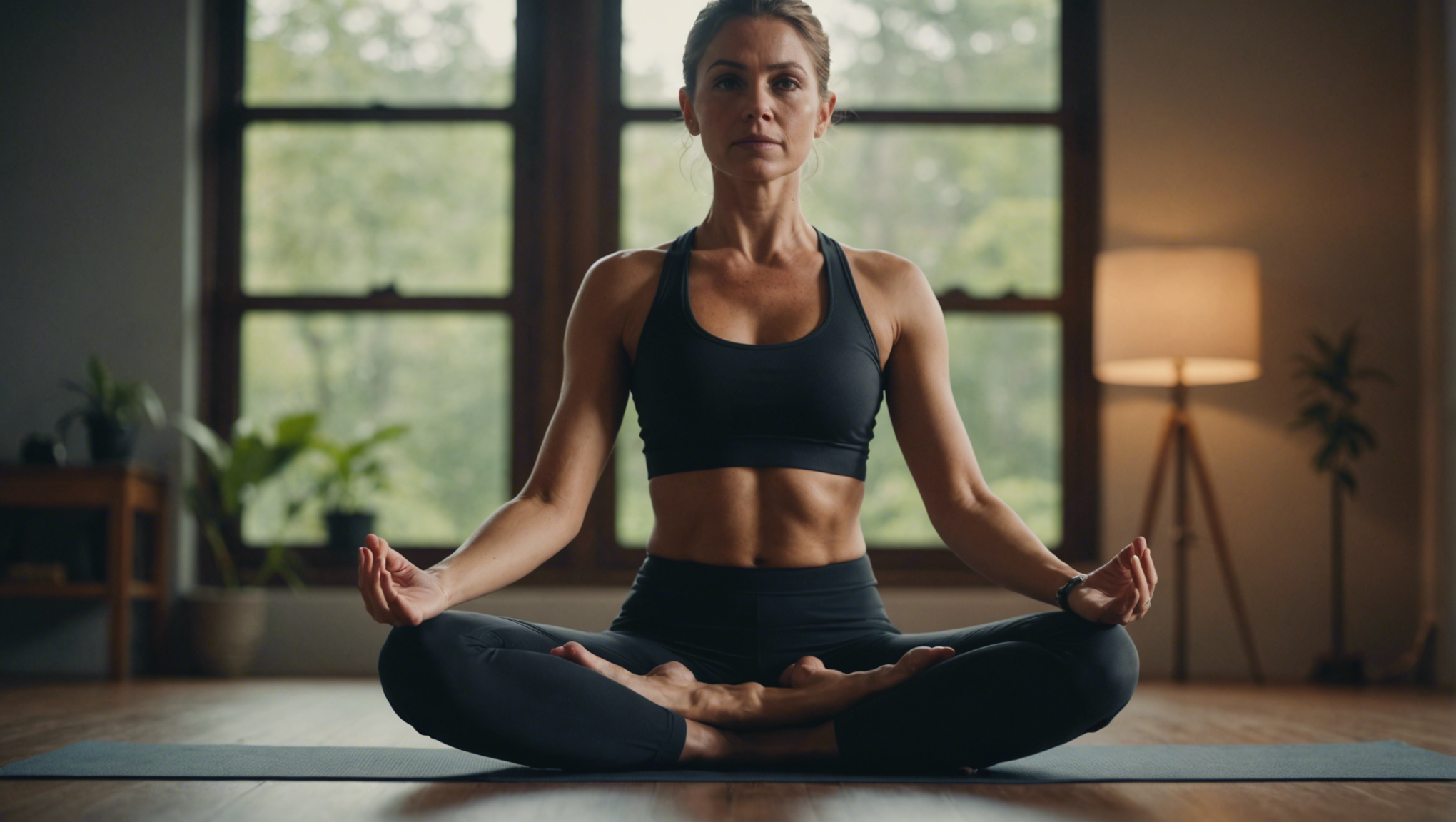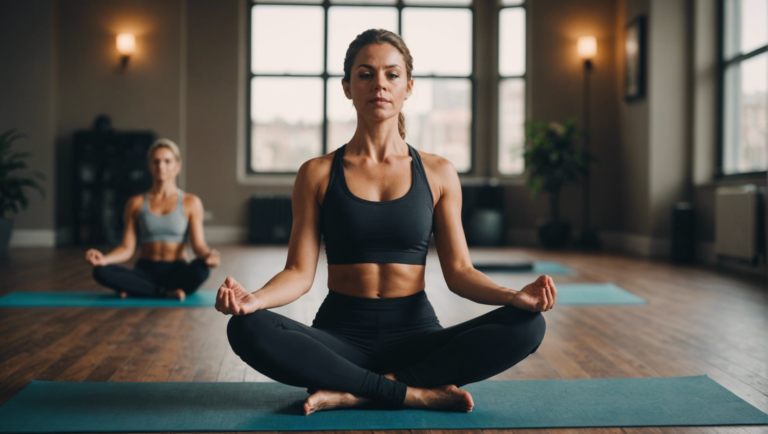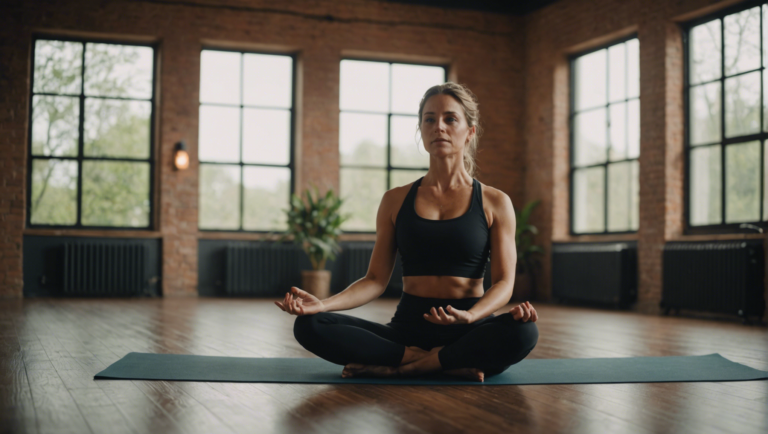Exploring The Variety: How Many Yoga Postures Are There?
Unraveling the Infinite: The Number of Yoga Postures
Yoga, a practice rooted in ancient India, has developed over thousands of years, offering a blend of physical, mental, and spiritual nourishment. The exploration of yoga postures (asanas) reveals a fascinating aspect of this discipline—the seemingly endless variety of poses catering to different abilities, goals, and preferences. This article delves into the multitudinous yoga asanas, aiming to shed light on their diversity and purpose.
The Quest for a Definitive Number
Attempting to quantify the number of yoga postures is akin to trying to capture the essence of the universe—vast and boundless. Traditional texts, such as the Hatha Yoga Pradipika, mention around 84 classic asanas taught by Lord Shiva. However, this figure merely scratches the surface. The evolution of yoga, influenced by various schools, teachers, and cultural interpretations, has expanded this repertoire significantly.
Modern Variations and Adaptations
In contemporary practice, the fusion of traditional with innovative approaches has led to an explosion in the number of asanas. Today, it’s estimated that there are thousands of yoga poses, each with variations and modifications to suit individual needs. This expansion reflects the adaptability of yoga to the changing human condition, embracing inclusivity and accessibility.
Categorizing the Asanas
To navigate the extensive collection of yoga asanas, they are often categorized by their physical orientation or intended effect. Here are some broad classifications:
- Standing Poses: These build strength, stamina, and flexibility, grounding practitioners in the present.
- Seated Poses: Focused on flexibility and meditation, these poses encourage introspection and calm.
- Backbends: Energizing and invigorating, backbends stimulate the nervous system and open the heart.
- Inversions: By reversing blood flow, inversions like the headstand rejuvenate the mind and body.
Each category serves distinct purposes, contributing to the holistic development of those who practice regularly.
The Significance of Names
The names of yoga poses, often derived from Sanskrit, add a layer of depth and meaning to the practice. They pay homage to the natural world, sages, mythology, and animals, connecting practitioners to the yoga tradition and its philosophical roots. For instance, Vrikshasana (Tree Pose) embodies the qualities of a tree—grounded yet reaching skyward.
Personal Journeys Through Asanas
The beauty of yoga lies in its personalization. Not every asana suits every body, nor is every pose meant to be mastered by all practitioners. Yoga encourages a personal journey through its postures, advocating self-awareness, patience, and persistence. This journey is as much about the internal transformation as it is about physical achievement.
Embracing the Infinite
Attempting to confine yoga to a finite number of postures overlooks its essence—growth, exploration, and boundless potential. As such, the question of how many yoga postures exist is less relevant than understanding what each posture offers the practitioner. Yoga is a dynamic practice, evolving with each individual’s practice and interpretation.
The Universal Appeal of Yoga
The vast array of yoga postures ensures that the practice remains accessible and relevant across different cultures, ages, and levels of physical ability. This universality is a testament to yoga’s enduring appeal, fostering a global community connected through breath, movement, and mindfulness.
Engaging with the Diversity of Asanas
For those embarking on or continuing their yoga journey, the diversity of asanas presents an opportunity for endless exploration. Engaging with this variety allows practitioners to discover paths to health, well-being, and inner peace that are uniquely their own. It encourages a practice defined not by the quantity of poses mastered but by the quality of attention, intention, and present-moment awareness brought to each movement and breath.
The exploration of yoga postures is more than a physical endeavor; it is a journey into the depths of the self, offering each practitioner a mirror to their infinite potential. In embracing the vast variety of yoga asanas, one engages with a practice that is as expansive and varied as life itself, reminding us that growth and transformation are limitless.
A Historical Glimpse into Yoga’s Evolution
Yoga’s inception and journey through time present a fascinating narrative of spiritual evolution, cultural exchange, and adaptation. Tracing its roots back over 5,000 years in ancient India, yoga has transcended its early mystical beginnings to become a global phenomenon, deeply embedded in modern wellness practices. This article delves into the historical backdrop, transformation, and present standing of yoga, offering a rich tableau of its passage through the ages.
The Dawn of Yoga: Ancient Beginnings
Yoga’s origins are steeped in the ancient texts of India, including the Vedas, the oldest scriptures of Hinduism, which lay the groundwork for its philosophical and spiritual dimensions. The word "yoga" itself, derived from the Sanskrit root "yuj," means to yoke or unite, symbolizing the union of the individual soul with the universal spirit. This period was characterized by a strong emphasis on meditation, ascetic practices, and the pursuit of enlightenment.
The Classical Era: Patanjali’s Yoga Sutras
The next significant milestone in yoga’s history came with the compilation of the Yoga Sutras by Sage Patanjali, around the second century BCE. This text, consisting of 196 aphorisms, outlines the eight limbs of yoga, offering a systematic approach to achieving the state of yoga, or union. Patanjali’s work is foundational, marking the transition from yoga’s diverse practices to a more codified system, focusing on ethics, discipline, and the mind’s role in attaining spiritual liberation.
The Post-Classical and Pre-Modern Periods: Diversification and Expansion
Following the classical period, yoga began to evolve in varied directions, incorporating new practices and philosophies. Tantra Yoga emerged, emphasizing the sacredness of the body and advocating for a more direct, experiential path to enlightenment through rituals, meditation, and breathing exercises. This era also saw the development of Hatha Yoga, with a focus on physical postures (asanas) and breath control (pranayama) to prepare the body for spiritual pursuits.
The Modern Era: Global Dissemination and Adaptation
The 20th century marked the global spread of yoga, as it began to be embraced by the Western world. Pioneers like Swami Vivekananda and later B.K.S. Iyengar, Pattabhi Jois, and T.K.V. Desikachar played instrumental roles in introducing yoga to the West. Their efforts led to the integration of yoga into health and fitness regimes, with a notable emphasis on asanas. This period witnessed a significant shift—from yoga’s primarily spiritual focus to a more comprehensive approach that also emphasizes physical well-being.
Contemporary Yoga: Diversity and Innovation
Today, yoga’s landscape is incredibly diverse, with numerous styles and schools that cater to a wide array of preferences and objectives. From the tranquility of Yin Yoga to the dynamic sequences of Vinyasa and the precision of Iyengar Yoga, there is a style for almost every disposition and goal. Furthermore, innovations like Aerial Yoga and AcroYoga highlight yoga’s adaptability and its continuous evolution to meet contemporary needs.
Yoga’s journey from the ancient to the modern has been characterized by adaptation and reinterpretation. Its ability to resonate across different cultures and epochs is a testament to its universal appeal and transformative power. Despite its myriad forms and practices, the essence of yoga—its aim to unite body, mind, and spirit—remains unchanged, making it a perennial wellspring of wellness and spiritual nourishment.
As yoga continues to evolve, its future paths will likely embrace both tradition and innovation, further enriching this ancient practice with new insights and perspectives. Whether one seeks physical health, mental clarity, or spiritual awakening, yoga offers a comprehensive path that responds to the human yearning for connectivity and inner peace. Thus, exploring yoga’s storied past not only educates about its rich heritage but also illuminates the potential within each practice to foster profound personal transformation.
The Impact of Yoga Postures on Mental and Physical Health
The Profound Link Between Yoga Postures and Improved Well-being
Yoga, an ancient practice originating from India, has spread across the globe as a holistic approach to enhancing both mental and physical health. Its benefits go beyond mere exercise, extending into the realms of psychological well-being and emotional balance. Through the lens of modern research and firsthand accounts, the impact of yoga postures—also known as asanas—on health presents a compelling case for their integration into daily life.
Diving Deep into the Physical Benefits of Yoga Asanas
Yoga postures are intricately designed to work not only on the body’s flexibility but also on its strength, balance, and overall endurance. A systematic review of scientific studies reveals that consistent practice can significantly improve one’s physical health in various ways. For instance, asanas like the Downward Dog and Plank Pose contribute to building core strength, while the Warrior series enhances muscle tone and balance.
Beyond muscle tone and strength, yoga plays a crucial role in enhancing bodily functions. Practices involving deep breathing and relaxation have been shown to lower blood pressure, reduce heart rate, and improve respiratory efficiency. Additionally, certain postures aid in stimulating the digestive system, thereby contributing to gastrointestinal health.
Unlocking the Mental Health Advantages of Consistent Yoga Practice
The mental health benefits associated with yoga are as significant as the physical ones. Engaging in this ancient practice can lead to remarkable improvements in stress reduction, anxiety management, and overall mental clarity. Asanas coupled with meditation and breathing exercises foster a state of mindfulness, which enables individuals to remain present and reduce the impact of stressors in their lives.
One of the critical mechanisms through which yoga enhances mental health is by reducing cortisol levels, the stress hormone, thereby promoting a sense of relaxation and calm. Additionally, the meditative aspects of yoga encourage a focused mind, improving concentration and memory. For many practitioners, the mental discipline developed through regular yoga practice translates into improved emotional resilience and an enhanced ability to navigate life’s challenges.
Yoga and Its Role in Holistic Health: The Bigger Picture
While the physical and mental health benefits of yoga are well-documented, its holistic impact extends even further. Yoga encourages mindfulness not only on the mat but in daily life, promoting healthy eating habits, sleep patterns, and interactions with others. This comprehensive approach to wellbeing can lead to a more balanced lifestyle, imbuing practitioners with a sense of harmony and peace.
Moreover, yoga’s adaptability makes it accessible to individuals of all ages and fitness levels. Whether one is dealing with chronic pain, seeking to reduce stress, or simply aiming to stay fit, yoga offers a diverse range of postures and practices that can be customized to meet various needs and goals. This inclusivity is part of what makes yoga a universally beneficial practice for holistic health.
Embracing Yoga: Pathways to Enhanced Quality of Life
Embracing yoga as a regular part of one’s routine can unlock numerous health benefits and lead to a more balanced, healthy, and fulfilling life. However, as with any form of exercise or mental health practice, consistency is key. Starting with short, daily sessions can help integrate yoga into your life, gradually increasing duration and intensity as comfort and proficiency grow.
It’s also essential to listen to your body and mind, allowing yoga to be not just a practice but a journey of self-discovery and healing. As research continues to unveil the profound benefits of yoga, it becomes increasingly clear that this ancient practice holds modern-day solutions to improving our health and wellbeing.
Modern Yoga: Innovation or Departure from Tradition?
The Evolution of Yoga Practices: Embracing Change or Straying from Roots?
Yoga, a millennia-old tradition, has undergone a significant transformation in recent decades. This ancient practice, once rooted in the spiritual and ascetic traditions of India, has evolved into a global phenomenon that intersects with fitness, wellness, and lifestyle. As yoga’s popularity has surged, so has the debate around modern yoga practices: Are they an innovative evolution of the discipline, or do they represent a departure from its traditional essence?
The Historical Foundations of Yoga
To understand the impact of modernization on yoga, one must first consider its origins. Historically, yoga was more than physical postures; it was a comprehensive philosophy that encompassed meditation, ethics, and a pathway to enlightenment. The classical texts, such as the Yoga Sutras of Patanjali, outline an eight-limbed path (Ashtanga) that includes ethical precepts, breath control, meditation, and ultimately, samadhi, or a state of higher consciousness. Initially, the physical aspect of yoga, or asana, was just one component of this holistic approach.
Modern Innovations in Yoga
The contemporary yoga movement has introduced a variety of styles and practices, from the physically intensive Ashtanga and Power Yoga to the restorative Gentle and Yin Yoga. Innovations also include hybrids like Yoga with weights, Aquatic Yoga, and even Aerial Yoga, utilizing hammocks. These modern adaptations cater to diverse preferences and physical abilities, promoting yoga’s accessibility and inclusivity. However, they also raise questions about the dilution of yoga’s traditional focus on spirituality and personal growth.
The Intersection of Yoga and Wellness Culture
In recent years, yoga has been intertwined with the broader wellness and fitness industry. This coupling has led to a significant shift in how yoga is marketed and perceived. The emphasis often lies on physical benefits, such as flexibility, strength, and stress relief, rather than spiritual development or enlightenment. Social media has amplified this trend, with images of perfect poses and exotic retreats sometimes overshadowing the practice’s introspective and philosophical aspects. This has prompted a discussion on whether yoga is being commodified and stripped of its essence to fit a consumerist culture.
Balancing Tradition and Innovation
Despite concerns, there is a growing movement within the yoga community that seeks to balance respect for yoga’s roots with the realities of its global expansion. Teachers and practitioners alike are finding ways to deepen their understanding of yoga’s history and philosophy, incorporating meditation and ethical practices into classes and emphasizing yoga’s mental and spiritual benefits alongside the physical. This approach acknowledges yoga’s origins while also recognizing that traditions can evolve to meet contemporary needs and contexts.
The Role of Individual Practice in Defining Yoga
Ultimately, the essence of yoga may lie in the intentions and awareness of individual practitioners. Yoga’s traditional goal is the realization of the self and the unity of individual consciousness with the universal. This journey is deeply personal and can manifest in myriad forms, from a physically demanding practice to a quiet, meditative experience.
The debate over modern yoga as innovation or departure misses the point that yoga has always been a living practice, adaptable to the needs and circumstances of those who walk its path. Whether one is attracted to the physical challenge of a Vinyasa flow class or seeks the quiet introspection of a meditation session, the core of yoga remains: a quest for balance, awareness, and inner peace.
Navigating the Future of Yoga
The future of yoga lies in an ongoing dialogue between tradition and innovation. As it continues to spread across cultures and societies, yoga will inevitably take on new forms and expressions. The challenge for the global yoga community is to ensure that, amidst its evolution, the practice maintains its integrity and continues to offer a path to wellness, fulfillment, and spiritual insight.
By embracing both the roots and the wings of yoga, practitioners and teachers can honor the tradition’s past while also making it relevant and accessible in a rapidly changing world. This inclusive and adaptive approach may be the true essence of yoga’s enduring appeal, allowing it to thrive as a source of strength, serenity, and connection in the modern world.
Future Directions: The Integration of Technological Advances in Yoga Practice
The Evolution of Yoga with Technological Enhancements
Yoga, an ancient practice with roots stretching back thousands of years, has always been about the union of mind, body, and spirit. Traditionally, it relied on the presence of a guru or a physical class setting to guide practitioners through their journey. However, as the world embraces digital transformation, the practice of yoga has not been left behind. The integration of technology into yoga practice is not just redefining the traditional methodologies but also making yoga more accessible, personalized, and advanced.
Virtual Yoga Platforms: Bridging the Distance
One of the most significant technological advances in yoga practice is the rise of virtual platforms. Online classes and apps offer a plethora of resources ranging from beginner to advanced levels, accommodating every practitioner’s needs. These platforms use sophisticated algorithms to recommend personalized yoga routines, taking into account the user’s goals, skills, and physical condition. What’s remarkable is the ability of these digital classes to mimic the experience of being in a yoga studio, with live feedback from instructors through video conferencing technology. This evolution brings the yoga experience to remote locations, eliminating geographical barriers to wellness and community.
Wearable Technology: Enhancing Personal Yoga Practice
The surge in wearable technology has provided yogis with unprecedented insights into their practice. Devices such as fitness trackers and smartwatches can monitor heart rate, flexibility, posture, and even breathing patterns. This immediate feedback allows practitioners to adjust their poses in real-time, enhancing the effectiveness and safety of their practice. Moreover, these devices often come with apps that suggest improvements and track progress over time, adding a layer of personalization and motivation that was previously hard to achieve outside a yoga studio.
The Role of AI and Machine Learning in Personalized Yoga Sequences
Artificial Intelligence (AI) and Machine Learning are at the forefront of customizing yoga experiences. By analyzing data from a user’s past practices, these technologies can create entirely personalized yoga sequences that cater to individual preferences, address specific health issues, and work towards set goals. This level of customization ensures that yoga practice is not just a generic set of poses but a tailored routine that evolves with the practitioner, potentially increasing the effectiveness and satisfaction derived from each session.
Immersive Yoga Experiences with Virtual Reality
Virtual Reality (VR) technology takes the immersive experience of yoga to a whole new level. Imagine practicing yoga on top of a Himalayan peak or on a serene beach at sunset without leaving your home. VR can transport yogis to exotic locations, enhancing the spiritual and relaxation aspects of yoga practice. This sensory experience, combined with guided sessions, can dramatically deepen the practice, making yoga both a physical and exploratory journey.
The Future Is Now: Embracing Technological Integration
The integration of technology into yoga practice is a testament to the adaptability and resilience of this ancient discipline. By embracing these technological advancements, yoga can become more accessible, personalized, and enriching for practitioners worldwide. It is important, however, for yogis to use technology as a tool to enhance, rather than replace, the traditional principles of yoga—mindfulness, discipline, and the search for inner peace.
As we move forward, the potential for innovation in the yoga space is limitless. From AI-powered yoga mats that correct posture in real-time to social platforms that connect yogis around the world, technology has the power to transform yoga practice in ways we are just beginning to explore. Ultimately, the fusion of yoga and technology offers an exciting pathway to explore the depth of the human mind-body connection, making ancient wisdom accessible to the modern world.
Conclusion
Embarking on a journey through the vast landscape of yoga reveals a practice that is both timeless and dynamically evolving. As we traversed the myriad of yoga postures, it became evident that attempting to quantify them is akin to grasping the infinite. Each asana, steeped in ancient wisdom, is a thread in the expansive tapestry of yoga, offering a unique blend of physical, mental, and spiritual benefits. This exploration not only deepened our understanding of yoga’s complexity but also illuminated its capacity to adapt and flourish across different eras and cultures.
A delve into the historical evolution of yoga unveiled a rich heritage that has morphed seamlessly with the passage of time. From its inception in the Indus-Sarasvati civilization to its profound philosophies scripted in the Vedas and the Upanishads, yoga has been a beacon of enlightenment and transformation. The sage Patanjali’s compilation of the Yoga Sutras marked a pivotal moment, codifying yoga into an organized system of practice. This historical journey underscores the resilience and enduring appeal of yoga, highlighting its ability to transcend time while retaining its core essence.
The discourse on the influence of yoga postures on mental and physical health unveiled compelling evidence of its holistic healing capabilities. It’s fascinating to observe how the practice of yoga, with its spectrum of asanas, pranayama (breathing techniques), and dhyana (meditation), significantly contributes to well-being. The synchronization of breath with movement not only enhances physical flexibility and strength but also promotes mental clarity and emotional stability. These benefits, backed by scientific research, advocate for yoga as an indispensable tool in the pursuit of a balanced and healthful life.
In contemplating modern yoga’s trajectory, we unearthed a dichotomy between innovation and the fidelity to traditional practices. The contemporary yoga landscape is a testament to humanity’s ingenuity, birthing diverse styles that cater to the changing needs of society. However, this proliferation poses a philosophical question about the essence of yoga. Is the introduction of practices like aerial yoga or the incorporation of technology diluting its sacredness, or are these innovations making yoga more accessible and relevant in today’s fast-paced world? This discourse invites yogis and scholars alike to reflect on the delicate balance between preserving yoga’s integrity and embracing progress.
Our gaze into the future hinted at an exciting confluence of technology and yoga. The advent of virtual reality, AI-driven personal yoga coaches, and online platforms has democratized access to yoga, enabling practitioners to explore this ancient art form in the privacy of their homes. However, as we venture further into this digital age, the challenge will be to ensure that technology enhances the yoga experience without overshadowing its spiritual essence.
Navigating the realms of yoga’s illustrious past, its transformative power, and the dynamic shifts ushered in by modernity and technological advancements, we are reminded of its immutable core — the quest for harmony between the mind, body, and spirit. As yoga continues to evolve, it beckons us to remain rooted in its foundational principles while being open to growth and innovation. The dialogue between tradition and progress points toward a future where yoga remains a pivotal force for universal well-being, adapting to the rhythms of time while holding steadfast to the universal truths that have guided its journey across millennia.
This exploration into the vast expanse of yoga postures and its multifaceted dimensions does not merely end here; it is an invitation to delve deeper into one’s practice, to question, learn, and evolve. As individuals and as a collective, the journey through yoga is an endless voyage of discovery, imbued with the potential to transform lives and societies. Standing at this juncture, we are witnesses to yoga’s enduring legacy and agents of its unfolding future, united in the shared pursuit of holistic health and enlightenment.



